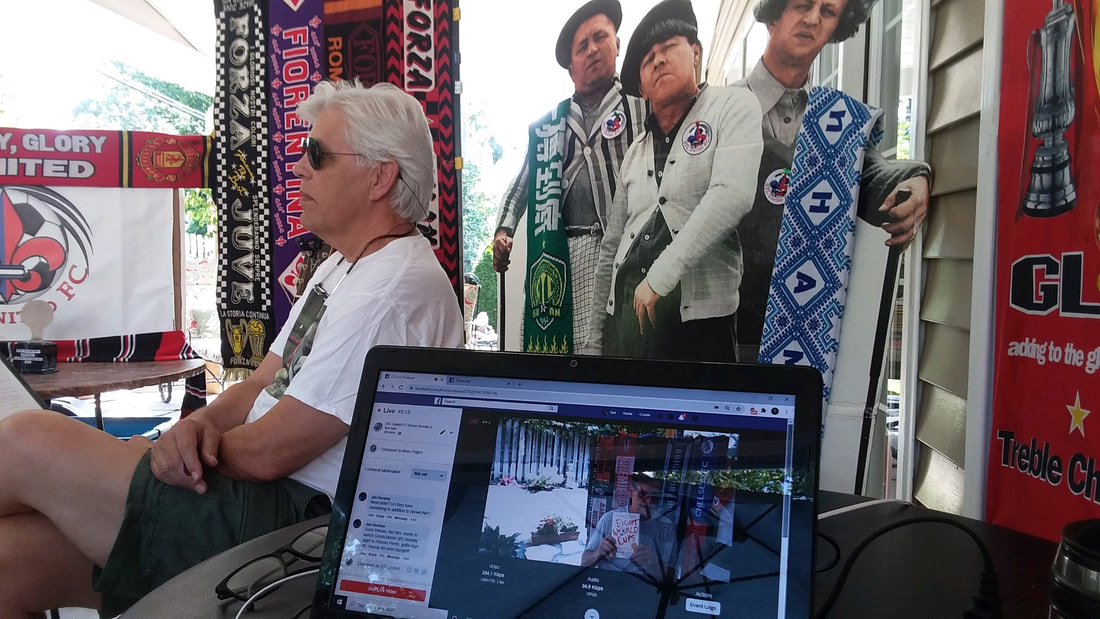|
You’ve heard of Men in Blazers? Get ready for (what I like to call) Men in Shorts, talking footy from a suburban patio on a Sunday morning. My St. Louis pal Tom Schwarz is part of an eclectic group of soccer buffs who emit the weekly show, captured as it happens and sent out through the mysteries of Youtube and Facebook. The merrie bande called me Sunday, July 5, and we talked about survival during the bungled pandemic, viewing “Hamilton” on the tube, live sports in empty stadiums. I am heard from Minute 30, as long as they can carry me. The show is “live” on Facebook, so I am told, but later put together for Youtube. They occasionally get a real soccer person, like Taylor Twellman of St. Louis, ace scorer now ace broadcaster, on Jan. 20, 2019. Cast members include: Edmundo (Gail Edmunds, plus guitar). Ted Williams, not the frozen one, women’s soccer authority and show producer. Josh McGehee, Bradley Univ., 2018, labelled “our resident soccer expert” (every show needs one.) Russell Blyth, St. Louis Univ., Dept. of Mathematics, “native of New Zealand” (you can hear it), reads the scores of Sunday matches in “traditional BBC fashion,” lover of tango and Liverpool fan. Patio Host Tom Schwarz, seller of plants, world traveler, family guy, outside gunner in basketball, and master salesman who once hawked 175 copies of my Stan Musial biography in soccer pub in one night. The lads are gearing up their act for the arrival of a St. Louis club in Major League Soccer in the 2022 season, an honor for one of America’s best nurturing cities for the sport. Meantime: socially distanced. (My old photo vanishes by pushing the video arrow, I hope.)
Roy Edelsack
7/7/2020 11:44:28 am
Obligatory (and a Shea Stadium staple in 1986):
George Vecsey
7/7/2020 08:54:43 pm
I guess the three lads appeal all over the place. I believe Jay Horwitz, long-time PR guy, is a 3 Stooges fan. They were big in 1986? It blurs.
Roy Edelsack
7/8/2020 12:07:30 pm
WHAT`S THE METS` PROBLEM? ASK CURLY 7/7/2020 12:56:04 pm
Just great. Impromptu is often more realistic than the best of planning. 7/9/2020 09:42:45 am
George, Comments are closed.
|
Categories
All
|










